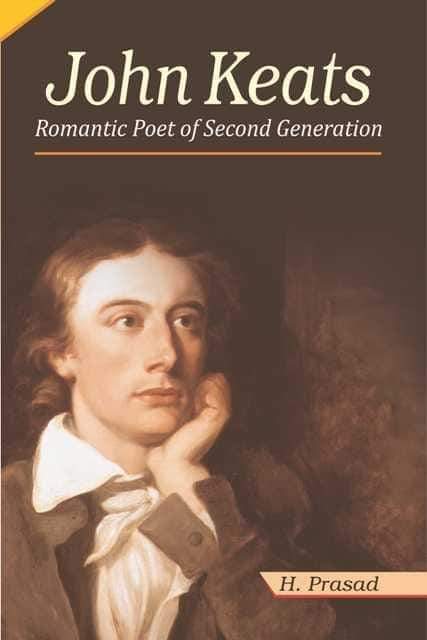John Keats is celebrated as one of the most distinguished romantic poets, and his timeless appeal continues to captivate readers across generations. His masterpieces, including “Ode to a Nightingale” and “Ode on a Grecian Urn,” reverberate with themes of love, departure, and the transcendent nature of time. Keats’ poetry beautifully exudes a profound admiration for love and beauty, as he passionately declares that “truth is beauty and beauty is truth.”

His verses are rich with emotion, evoking a delightful sense of nostalgia and prompting joyful contemplation in readers. It’s important to note that Keats faced tuberculosis, which significantly influenced his writing as he grappled with the fear of death and an unwavering yearning for love. Yet, his steadfast belief in the potent force of love and selflessness shines brightly in his poetry, offering delightful and profound insights into the human experience.
| Born | October 31, 1795, in Moorgate, London, England |
| Early life | Orphaned at 14, Keats was raised by his siblings and later apprenticed to a surgeon |
| Poetic Beginnings | Started writing poetry at 18, influenced by William Wordsworth and Leigh Hunt |
| Major Works | “Ode to a Nightingale” “Ode on a Grecian Urn” “To Autumn” “Endymion” “Hyperion” |
| Themes | Beauty, truth, mortality, love, and the transience of life |
| Style | Sensuous language, rich imagery, and exploration of the human experience |
| Influence | Part of the “Second Generation” of Romantic poets, along with Lord Byron and Percy Bysshe Shelley |
| Legacy | Posthumously recognized as one of the greatest English poets Inspired generations of writers, including Tennyson, Browning, and Yeats |
| Tragic Life | Diagnosed with tuberculosis at 23 Died on February 23, 1821, in Rome, Italy, at just 25 years old |
| Famous Quotes | “Beauty is truth, truth beauty” “The poetry of the earth is never dead” |

Among Romantic poets, William Wordsworth is known for laying the true foundation of the Romantic movement. He is credited with defining the romantic movement through the publication of the preface to “Lyrical Ballads.”
His work bridged the gap between man and the supernatural, making him a true legend in critical analysis and the study of the interconnected world of multiple ideas. His compositions often blend nature and human experiences to create a sublime beauty.
Wordsworth primarily focuses on variations in perception and the coexistence of truth and beauty, depicting the power of nature in shaping human emotions and experiences.
“Daffodils” is a perfect representation of Wordsworth’s idea of human connection to nature, encapsulated by the famous line “I wandered lonely as a cloud.” He strongly believes in the notion that nature holds the power to heal human sorrow and grief, transforming loneliness into solitude.
Another theme in Wordsworth’s work is the spontaneous and impulsive nature of art, emphasizing the intertwining relationship between man and nature. He criticizes the increasing industrialization and exploitation of nature, as seen in his poem “London, 1812,” which vividly portrays the negative effects of industrialization and humanity’s materialistic approach.
Facts
| Born | April 7, 1770 • Cockermouth • England |
|---|---|
| Died | April 23, 1850 (aged 80) • Westmorland • England |
| Title / Office | poet laureate (1843-1850) |
| Notable Works | “Lines Composed a Few Miles Above Tintern Abbey” • “Lyrical Ballads” • “Michael” • “Ode: Intimations of Immortality” • “Peter Bell” • “The Excursion” • “The Prelude” • “The Recluse” • “The Ruined Cottage” • “The Solitary Reaper” • “The World Is Too Much with Us” |
| Movement / Style | Romanticism • Lake poet |
| Notable Family Members | sister Dorothy Wordsworth |
| Subjects Of Study | poetry |
| Poetic Style | Focus on nature and its effects on the human mind Emphasis on emotion, imagination, and individual experience Use of simple, direct language to convey complex ideas Exploration of themes such as beauty, truth, and the sublime |
Overall, Wordsworth’s poetry evokes a sense of childhood nostalgia and a deep connection to nature. His portrayal of man as a survivor with a strong bond with nature is evident in poems like “The Solitary Reaper” and reflects his belief in finding solace and freedom in nature. His works often depict his childhood memories and the transition from childhood to adulthood, such as “Intimations of Immortality and Recollections of Early Childhood.”


Thanks for sharing. I read many of your blog posts, cool, your blog is very good.
Your article helped me a lot, is there any more related content? Thanks!